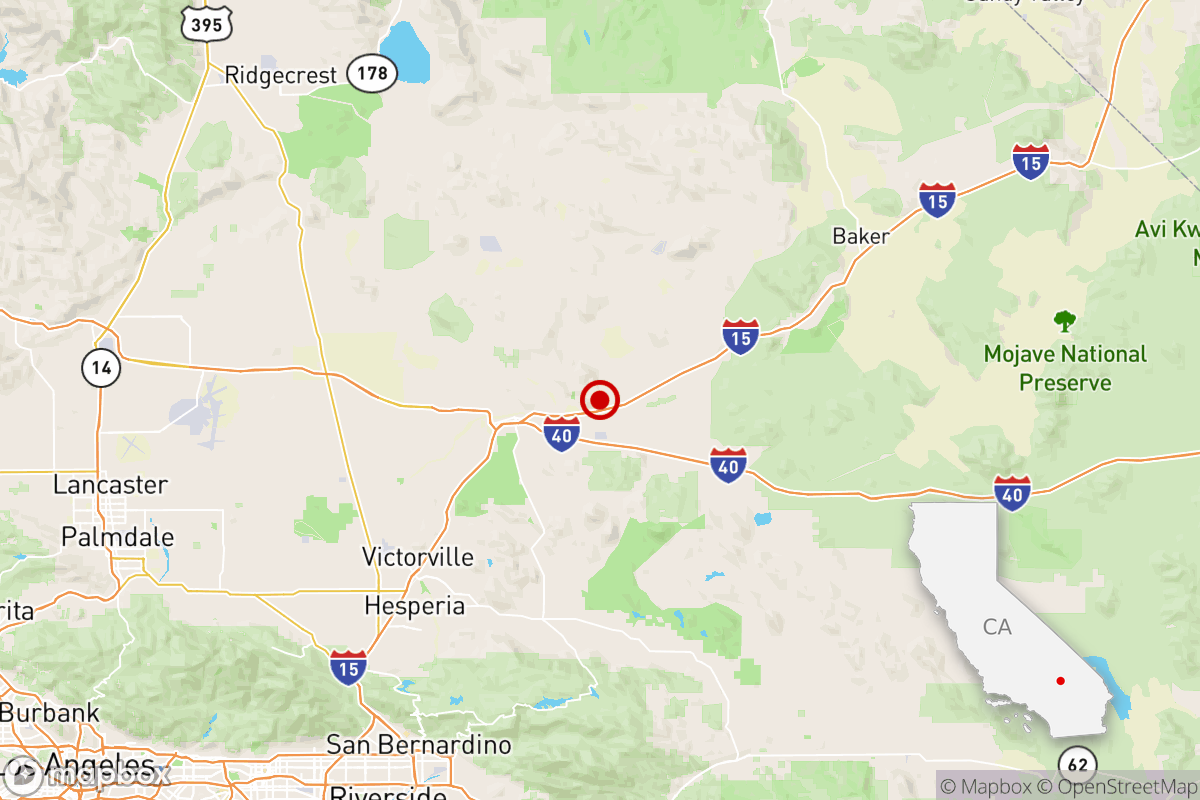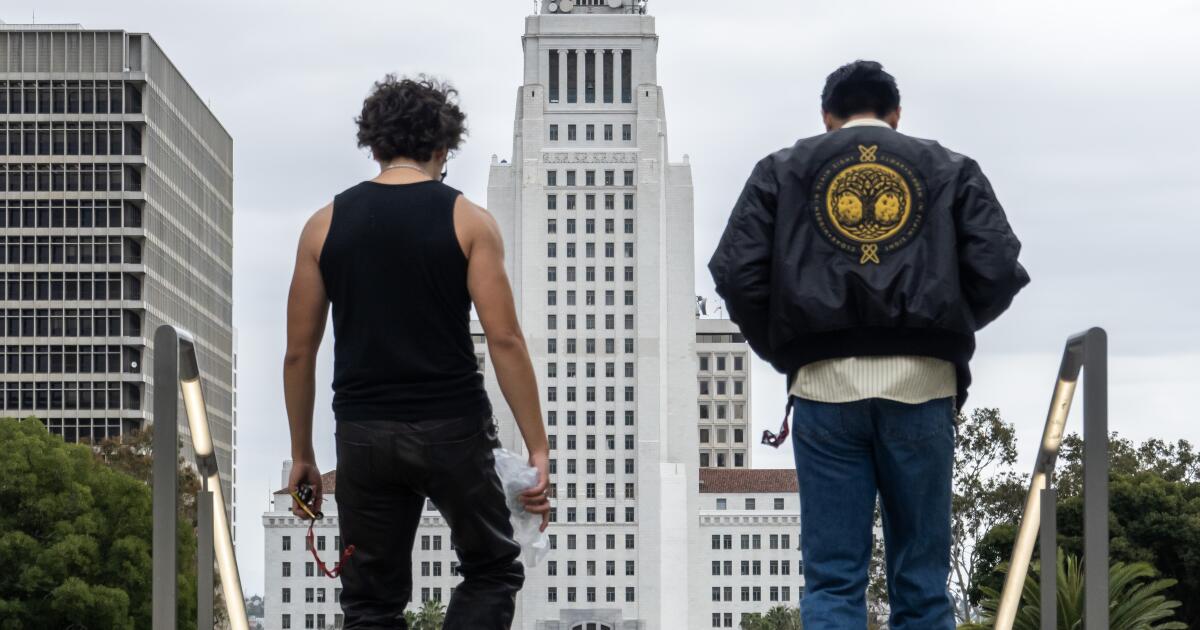The magnitude 4.9 earthquake that shook Southern California on Monday raised some classic questions: Why did it seem long to some and short to others, and why did some people not feel it at all?
It’s no surprise that residents near the epicenter, Barstow, felt the shaking the strongest and longest.
But in the Los Angeles Basin, some residents said they felt nothing, while others reported the shaking lasted for about 15 seconds.
In Pasadena, about 95 miles southwest of the epicenter, Morgan Page, a geophysicist with the U.S. Geological Survey, said she didn’t feel anything while walking around the first floor, but a colleague sitting in a chair on the second floor felt the tremor for a few seconds.
Reporters on the sixth and seventh floors of The Times’ El Segundo headquarters, adjacent to Los Angeles International Airport and about 115 miles southwest of the epicenter, felt a relatively mild tremor that lasted for 15 to 20 seconds.
The ground beneath your feet matters
For people at the epicenter of an earthquake, the shaking may seem to last longer because they feel the smaller ground movements as well as the larger tremors produced by the quake, Page said. In contrast, people farther away may only feel a portion of the larger ground movements.
The type of rock or soil underfoot is also important.
If you’re in a basin, whether it’s the Mojave Basin or the Los Angeles Basin, you’ve got sediments underneath that are “essentially more shaky,” so you’re likely to “have longer tremors and they’re amplified,” Page said.
The Los Angeles Basin is a six-mile-deep, bathtub-shaped hole in bedrock filled with soft sand and gravel that has eroded from the mountains to form plains, and where millions of people in Southern California live. When seismic energy is sent into these sedimentary basins, the strength of the shaking is amplified (up to 10 times what it would be like standing on bedrock) and the shaking resonates like a bowl of jelly, lengthening the duration of the shaking.
“When the waves get trapped in the basin, it just prolongs the shaking, but it also causes amplification, so the amplitude of the waves gets larger and you feel stronger shaking that you wouldn’t feel if there wasn’t amplification. So both of those things affect how long this shaking lasts,” Page said.
People who are sitting are more likely to feel the swaying than those who are walking or moving. “There’s a big difference between doing something and sitting still,” she says.
The shaking is stronger on higher floors
Your height within the building also matters.
Page said residents on higher floors would feel the shaking more strongly than those on the ground floor.
Imagine a table with a spring attached to it pointing upwards, with a weight on top of it — it’s like an inverted pendulum. “If you rock the table, the top of the spring will swing a lot more than the bottom,” Page said, explaining that someone on the top floor of the same building would feel a much greater swing than someone on a lower floor.
“At the bottom, it’s anchored to the ground, and at the top, it swings on a structure that’s partly flexible and partly rigid,” Page said.
Lessons from Ridgecrest
When the magnitude 7.1 Ridgecrest earthquake struck in 2019, 125 miles northeast of downtown Los Angeles, the difference in the shaking was clear.
Someone sitting in the lobby of a downtown high-rise during this quake may have felt a mild tremor that lasted for a few seconds, but walking up to the 50th floor was a terrifying experience as sensors on that floor swayed back and forth for up to a foot in each direction for two to three minutes.
On the 48th floor of another downtown building, a woman felt dizzy and her husband suffered motion sickness after several minutes of rocking.
“If you’re in a tall building, certain earthquakes can cause seasickness,” Monica Kohler, a civil engineering research professor at the California Institute of Technology, said in 2019.
People also reported varying experiences in downtown Los Angeles when the quake struck at 1 p.m. on Monday. In Silver Lake, Lucas, a 6-year-old tuxedo cat, was asleep through the quake, but his owner, who was in his third-floor apartment, felt the tremor for four to six seconds.
In the Los Feliz/East Hollywood neighborhood, one person sitting at a table felt two waves of shaking: the first lasted about three to four seconds, then weakened, and the second tremor shook the walls for five to six seconds, but another person standing nearby felt nothing.

The epicenter of Monday’s magnitude 4.9 earthquake was in California’s Mojave Desert, roughly halfway between Los Angeles and Las Vegas.
P waves and S waves
Los Angeles was too far from Monday’s epicenter for anyone to have felt the quake’s “P” waves (the first type of shaking wave produced by an earthquake, in which rocks vibrate in the direction of the wave’s travel), but Page said it’s possible someone in Los Angeles felt “S” waves (in which rocks vibrate perpendicular to the direction of the wave’s travel).
The final tremors felt there could have been the result of longer-period surface waves, Page said. Surface waves are the longest-lasting waves traveling along the Earth’s surface, and arrive later than S waves.
Surface waves are “the ones that make you feel like you’re on a boat, as opposed to the trembling P and S waves that you’ve experienced before, those are the waves that give you motion sickness,” Page says.
Times reporters Jim Budzinski, Brittney Mejia, Joel Rubin, Nathan Solis and Terry Tan contributed to this report.

